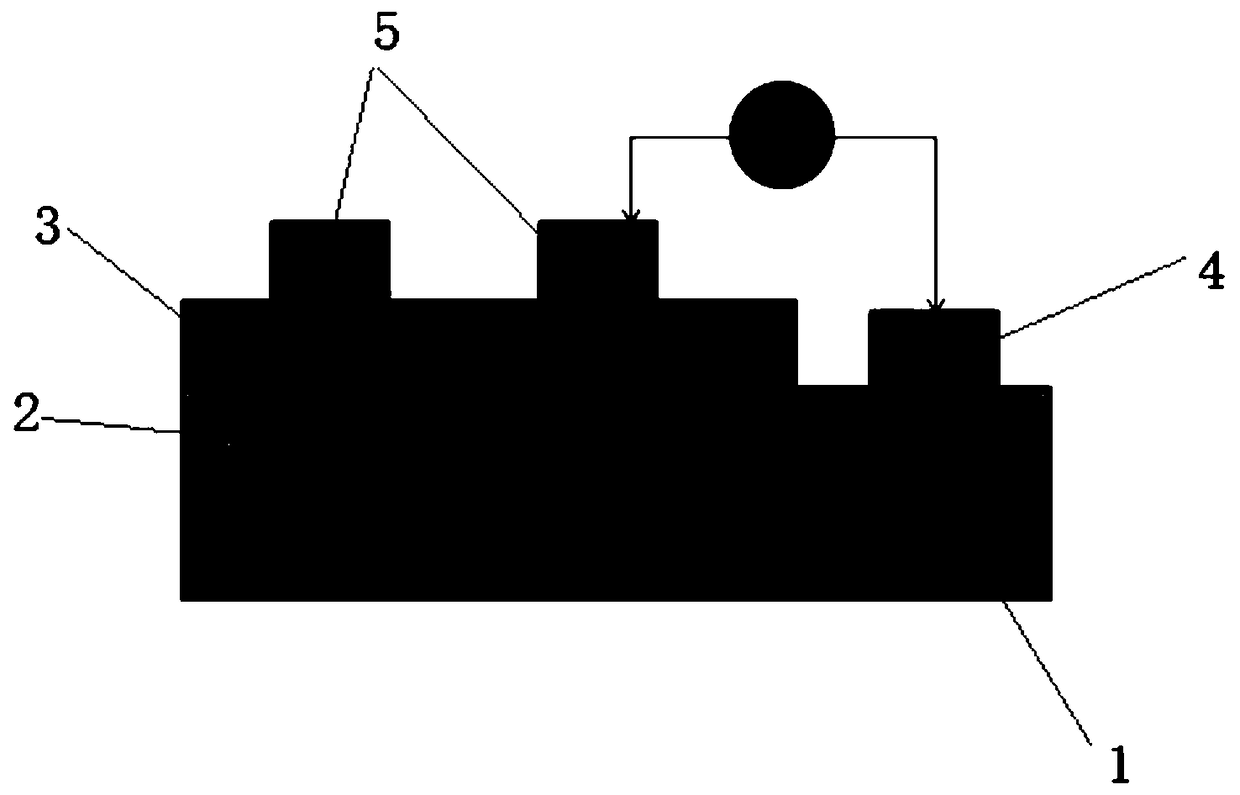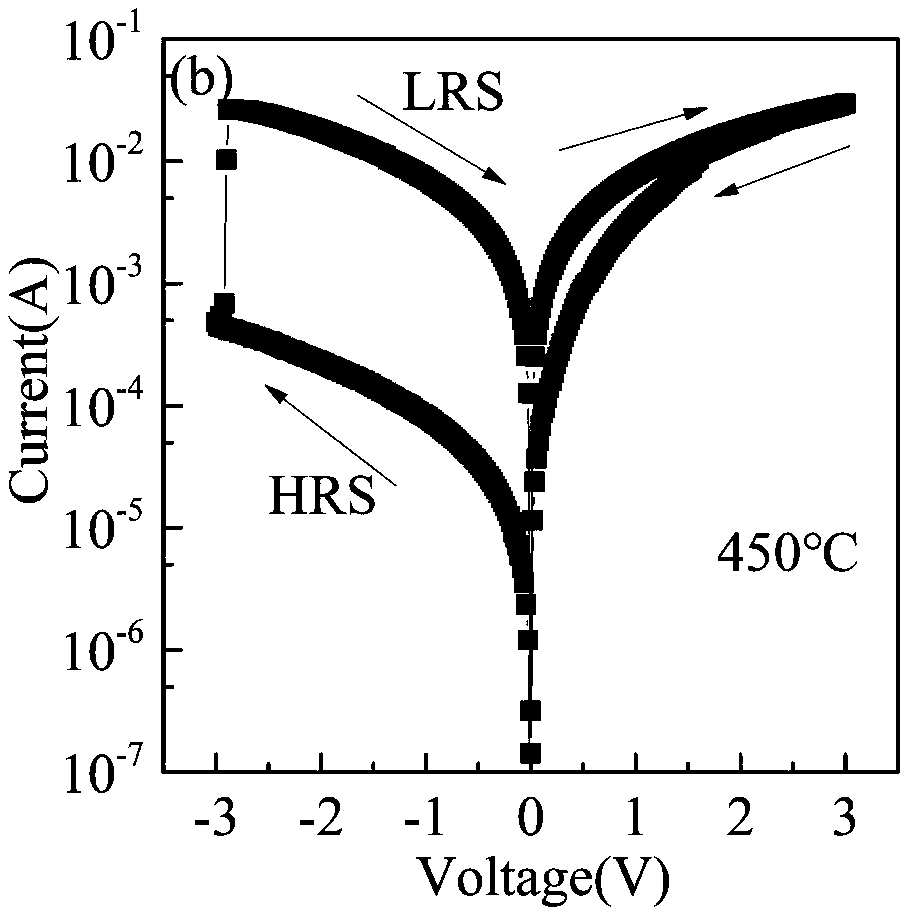A resistive random access memory, and a preparation method and application thereof
A technology of resistive variable memory and bottom electrode, applied in the direction of electrical components, etc., can solve the problems of resistive variable memory, poor resistive effect, and resistive variable memory without high and low resistance states, etc., and achieve good stability and excellent resistance variable The effect of the characteristic
- Summary
- Abstract
- Description
- Claims
- Application Information
AI Technical Summary
Problems solved by technology
Method used
Image
Examples
Embodiment 2
[0059] 1. Mix nickel acetate, manganese acetate and bismuth nitrate with ethylene glycol to make 30ml. Stir at 60°C until the solution is completely dissolved, and prepare a double perovskite oxide (BNMO) precursor solution, which is placed in a volumetric flask for three days.
[0060] 2. After three days, place the cleaned FTO / Glass substrate on the tray of the homogenizer, and stick it on the tray with double-sided adhesive. Use a syringe to draw 5ml of the solution, and gently push the bottom of the syringe to add the solution drop by drop on the substrate until the solution overflows the surface and stop the dropwise addition.
[0061] 3. Adjust the low speed of the homogenizer to 1000r / min, and the duration is 60s; the high speed is 3500r / min, and the duration is 15s, then put the substrate into the glue drying machine, bake for 15 minutes, and set the temperature at 300°C.
[0062] 4. After 10 minutes, take out the substrate, and the film is BNMO / FTO / Glass at this time...
Embodiment 3
[0066] 1. Mix nickel acetate, manganese acetate and bismuth nitrate with ethylene glycol to make 30ml. Stir at 60°C until the solution is completely dissolved, and prepare the BNMO precursor solution, which is placed in a volumetric flask for three days.
[0067] 2. After three days, place the cleaned FTO / Glass substrate on the tray of the homogenizer, and stick it on the tray with double-sided adhesive. Use a syringe to draw 5ml of the solution, and gently push the bottom of the syringe to add the solution drop by drop on the substrate until the solution overflows the surface and stop the dropwise addition.
[0068] 3. Adjust the low speed of the homogenizer to 1000r / min, and the duration is 60s; the high speed is 3500r / min, and the duration is 60s, then put the substrate into the glue drying machine, bake for 10 minutes, and set the temperature at 300°C.
[0069] 4. After 10 minutes, take out the substrate, and the film is BNMO / FTO / Glass at this time. Repeat step 3 and ste...
Embodiment 4
[0073] 1. Mix nickel acetate, manganese acetate and bismuth nitrate with ethylene glycol to make 30ml. Stir at 60°C until the solution is completely dissolved, and prepare the BNMO precursor solution, which is placed in a volumetric flask for three days.
[0074] 2. After three days, place the cleaned FTO / Glass substrate on the tray of the homogenizer, and stick it on the tray with double-sided adhesive. Use a syringe to draw 5ml of the solution, and gently push the bottom of the syringe to add the solution drop by drop on the substrate until the solution overflows the surface and stop the dropwise addition.
[0075] 3. Adjust the low speed of the homogenizer to 1000r / min for 60s; the high speed to 3500r / min for 60s, then put the substrate into the glue drying machine and bake for 10 minutes at a temperature of 300°C.
[0076] 4. After 10 minutes, take out the substrate, and the film is BNMO / FTO / Glass at this time. Repeat step 3 and step 4 once to prepare a BNMO / FTO / Glass th...
PUM
| Property | Measurement | Unit |
|---|---|---|
| Electric current | aaaaa | aaaaa |
Abstract
Description
Claims
Application Information
 Login to View More
Login to View More - R&D
- Intellectual Property
- Life Sciences
- Materials
- Tech Scout
- Unparalleled Data Quality
- Higher Quality Content
- 60% Fewer Hallucinations
Browse by: Latest US Patents, China's latest patents, Technical Efficacy Thesaurus, Application Domain, Technology Topic, Popular Technical Reports.
© 2025 PatSnap. All rights reserved.Legal|Privacy policy|Modern Slavery Act Transparency Statement|Sitemap|About US| Contact US: help@patsnap.com



